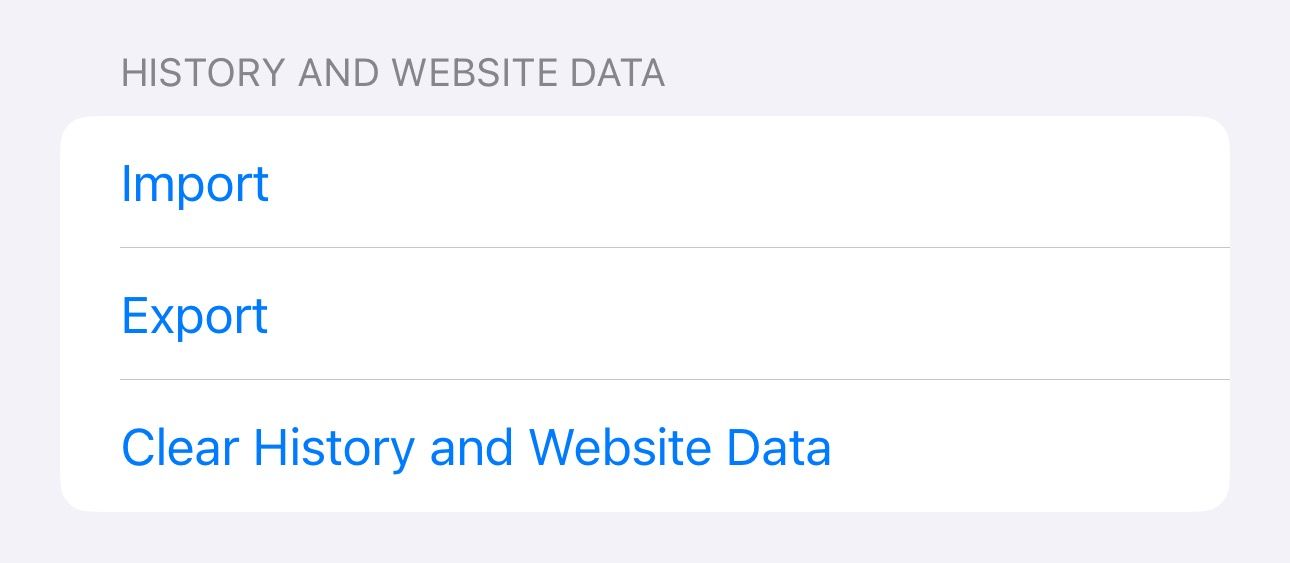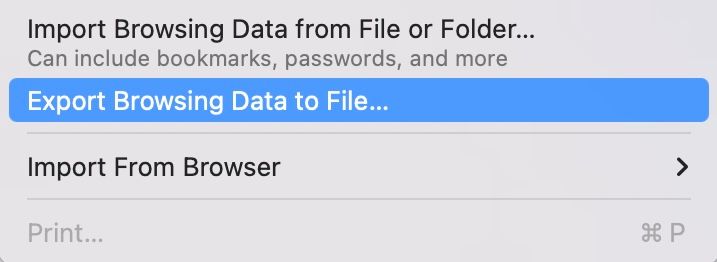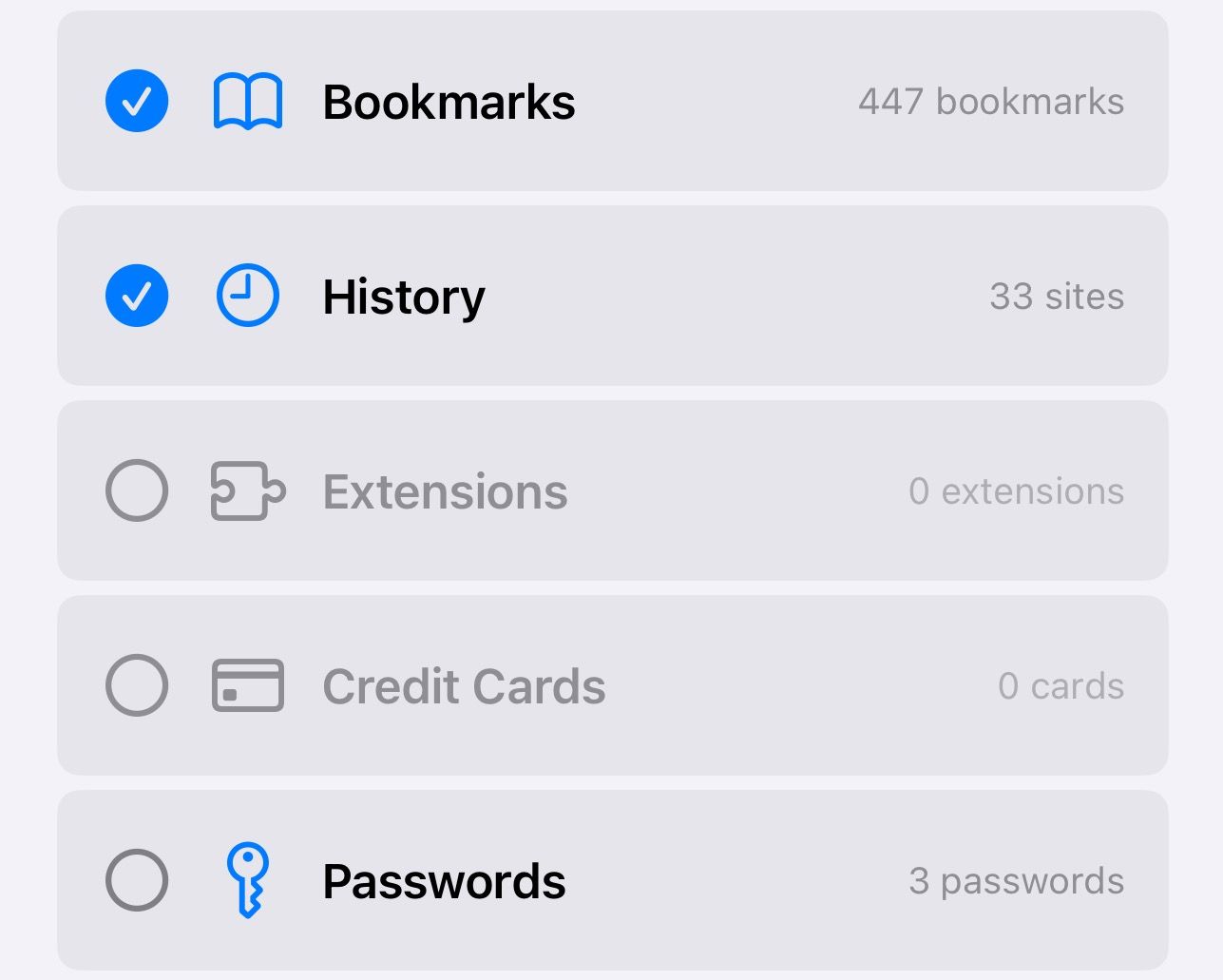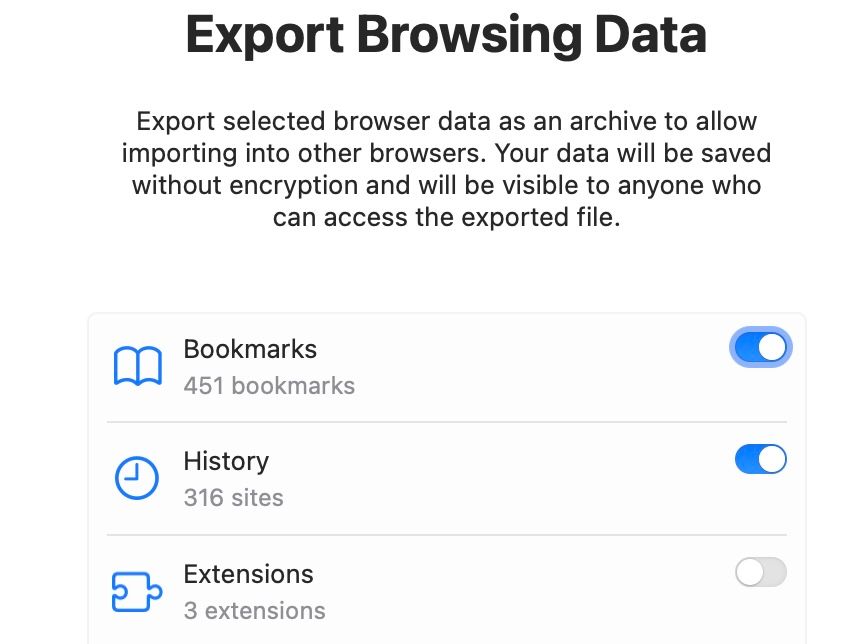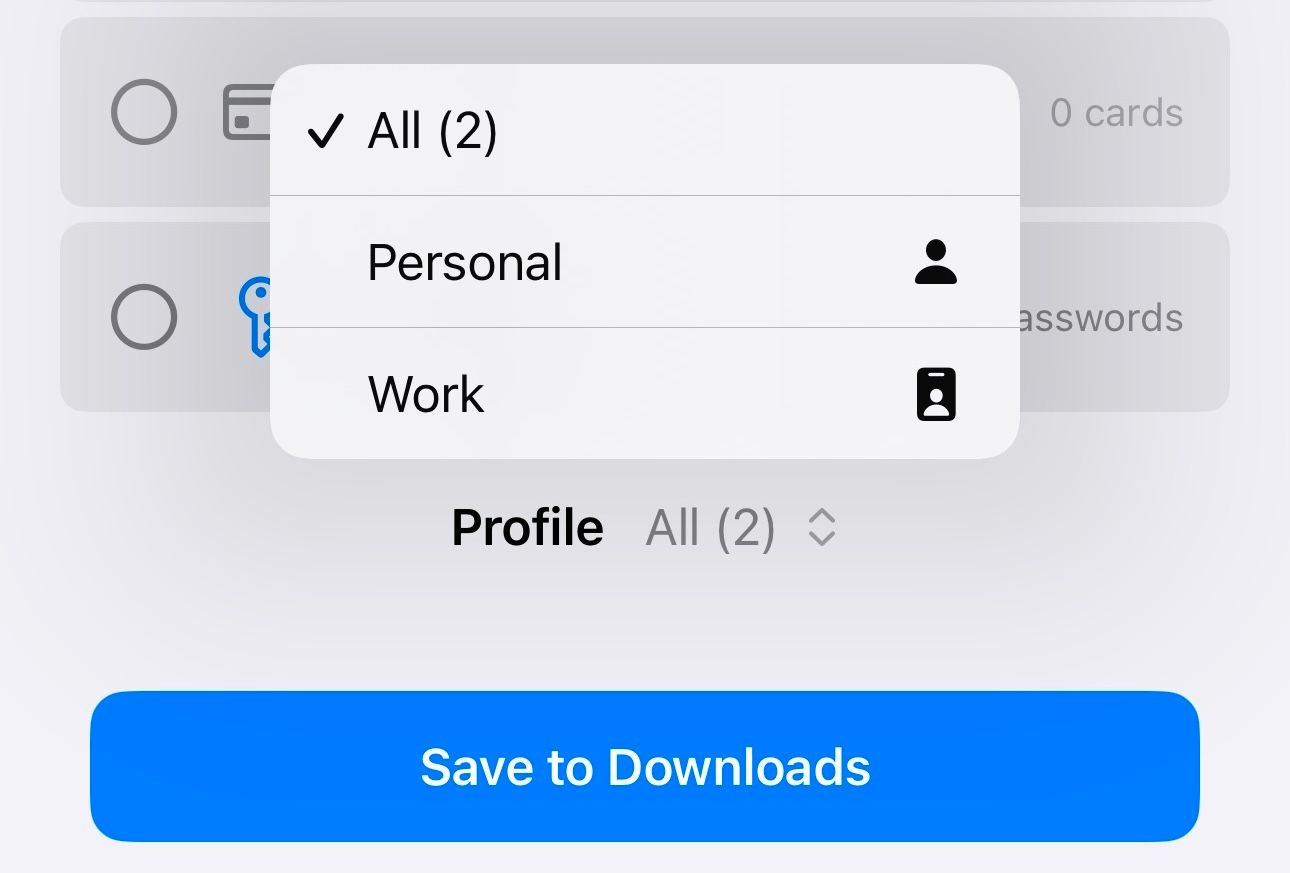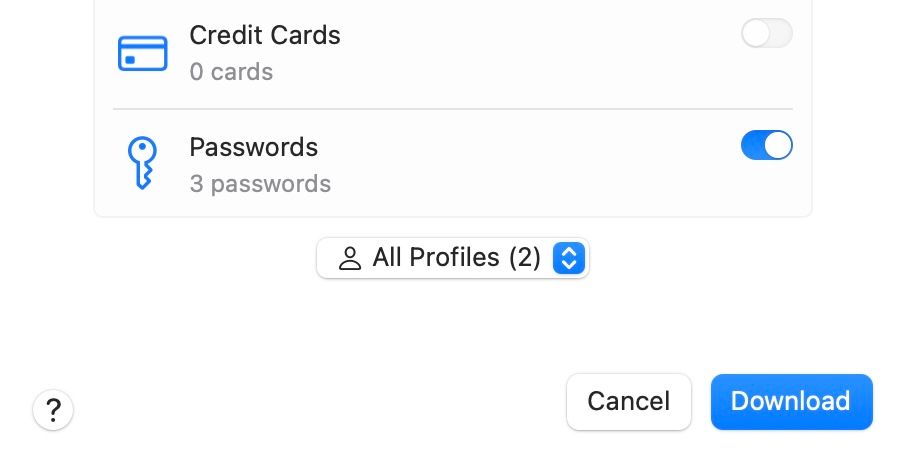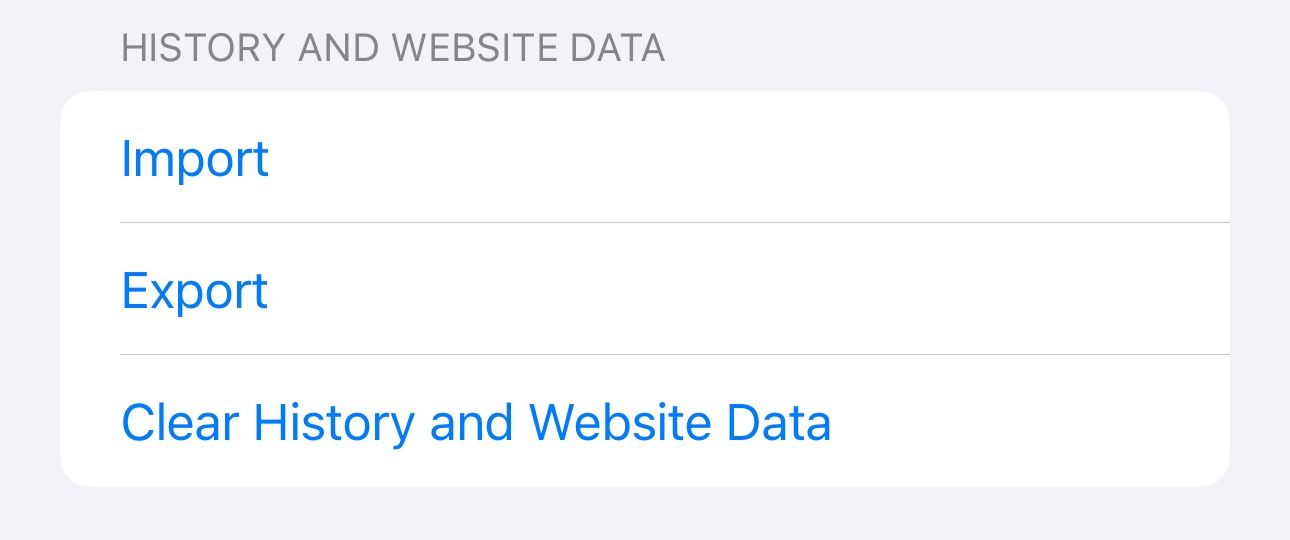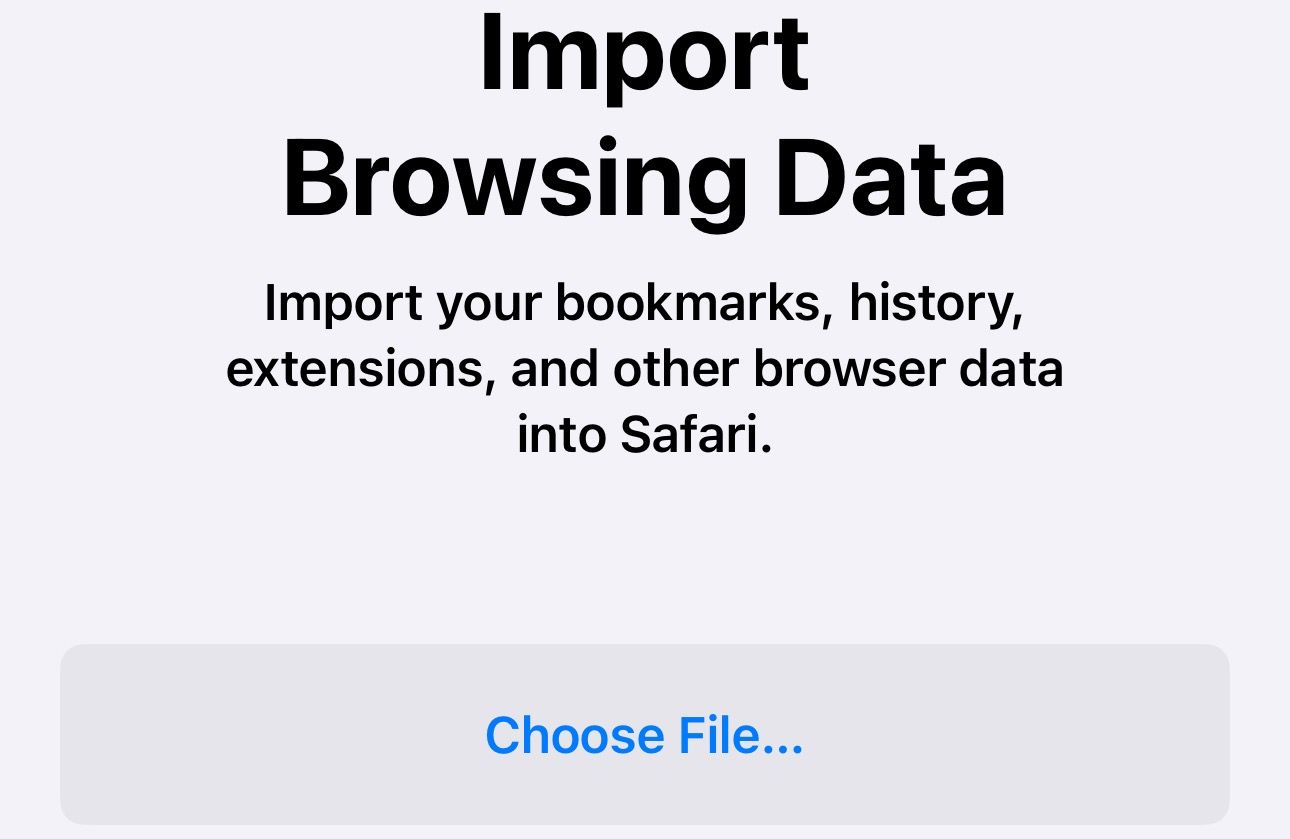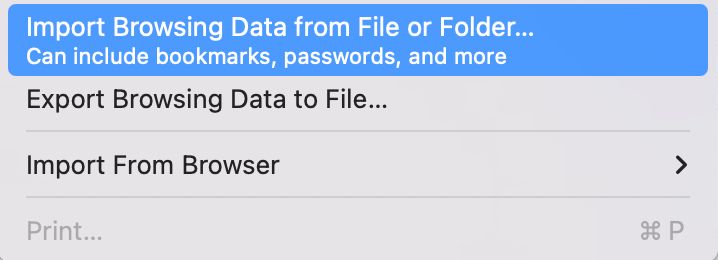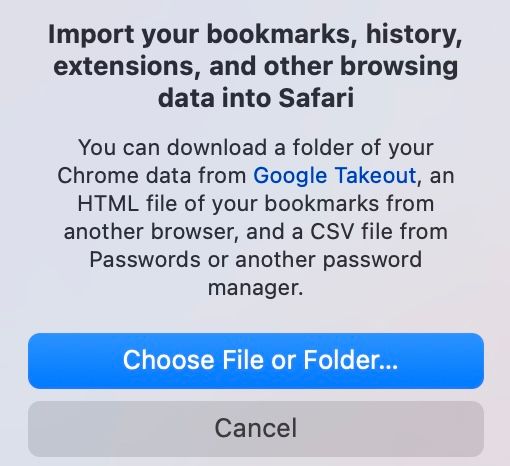Quick Links
Summary
- Safari’s import and export tool simplifies moving browsing data to and from another browser on iPhones and Macs.
- Export Safari data into a ZIP file to easily import into another browser, but be sure to delete the file after you’re done as the data is not encrypted.
- Import data into Safari on iPhones or Macs after exporting from another browser for seamless switching.
Switching browsers can be tedious. But if you’ve been mulling over switching to or moving away from Safari, Apple’s streamlined import and export tool reduces friction and saves you time. Let’s see how to use it.
Export Safari Browsing Data to Import Into Another Browser
Being highly optimized for Apple hardware, Safari is the preferred browser for many iPhone and Mac users. However, certain shortcomings, like the limited extensions library and lack of customization, may force some users to ditch Safari for third-party browsers.
If you’re in the same boat, you can export all your Safari browsing data on your iPhone, iPad, or Mac into a single ZIP file, which can later be imported into your new browser. The export tool data isn’t useful only when you want to switch to another browser. It also comes in handy when you want to back up your browsing data or migrate passwords from Apple Passwords into a third-party password manager.
Safari’s import and export tool is available with
macOS 15.2
and
iOS 18.2
, so make sure you’ve updated to the latest version if you can’t find it.
Exporting Safari browsing data on an iPhone or iPad and Mac is predominantly the same. Start by accessing the Safari export tool. You’ll find it as an “Export Browsing Data” page on iOS and a pop-up card on macOS.
On an iPhone or iPad, open the “Settings” app and go to “Apps” at the bottom of the page. Then, scroll down and choose “Safari.” Scroll down to the “History and Website Data” section and tap “Export.”
If you’re on a Mac, open Safari, click “File” in the menu bar, and select “Export Browsing Data to File.”
On the “Export Browsing Data” page or pop-up card, you’ll see all kinds of data selected by default. However, if you don’t want to include everything, you can deselect specific data. Simply uncheck the radio button next to the data you want to exclude if you’re on an iPhone or iPad.
On a Mac, toggle off the switch next to the data you don’t want to include in the export.
Similarly, the Safari export tool has data from all profiles selected for export by default, but you can skip browsing data from profiles you don’t need. To do this, tap or click the profile selector drop-down button that reads “All Profiles” at the bottom and make sure only the profile whose data you want to export is selected.
Each
Safari profile
has its own history and extension data. Meanwhile, other data like bookmarks, passwords, and credit cards remain the same across all profiles.
Finally, tap “Save to Downloads” on your iPhone or iPad and authenticate yourself. Safari will now download and save the browsing data to “Downloads” in the “iCloud Drive” folder. You can head to this folder to view the exported file.
Alternatively, you can choose the destination to save the exported file on a Mac. Click the “Download” button, select the folder to save the export, and hit “Save.” You’ll need to authenticate yourself to get the download started.
Apple says your Safari browsing data within the exported file is not encrypted, which means anyone with access to the file can simply decompress it to view all its contents. As such, be sure to delete this file from your iPhone, iPad, or Mac after you’ve finished exporting it into another browser.
Import Browsing Data From Another Browser Into Safari
Having used other browsers, if you want to switch to Safari for the ecosystem comfort it offers across Apple devices or its robust privacy features, you can import all your browsing data into Safari with the import tool. Safari’s import tool can also be useful when you just want to import passwords from another browser into Safari to simplify your website logins.
Just like exporting data from Safari, you can import data into Safari on an iPhone, iPad or Mac. Start by exporting browsing data from your current browser. Most browsers will export data into separate files. Here are the default formats you want different data files in:
- Bookmarks: HTML
- Passwords: CSV
- History: JSON
- Payment Cards: JSON
- Extensions: JSON
Be sure to move these exported file(s) to the device on which you want to perform them into Safari before you begin.
After this, if you’re on an iPhone or iPad, open Settings and navigate to Apps > Safari. Scroll down to the “History and Website Data” section and tap “Import” to bring up the “Import Browsing Data” page.
Next, tap “Choose File” on your iPhone or iPad, select the file containing the browsing data from your previous browser, and tap “Done.”
When prompted, authenticate yourself. Finally, tap “Import to Safari.” Repeat the steps until you’ve imported data from all the files.
On a Mac, launch Safari and click File > Import Browsing Data from File or Folder.
Now, click “Choose File or Folder” and select all the files or the folder from which you want to import data.
Hit “Import” to start the process.
Irrespective of whether you import data into Safari on an iPhone, iPad or Mac, you’ll get a prompt asking you to delete the file containing your browsing data from the previous browser. Tap or click the “Delete” button to delete it from your device.
It’s nice to see Apple making it easier to import and export Safari browsing data on not just Macs but also iPhones, as this eliminates the need for you to use your Mac when you want to switch browsers.
That said, with the exception of Brave and DuckDuckGo, not all browsers allow importing Safari data into their iOS or iPadOS apps. As a result, when switching to such a browser, you’ll have to import data onto its Mac app first and then enable sync with its mobile app on your iPhone or iPad to access all your history, bookmarks, passwords, and more across both devices seamlessly.


